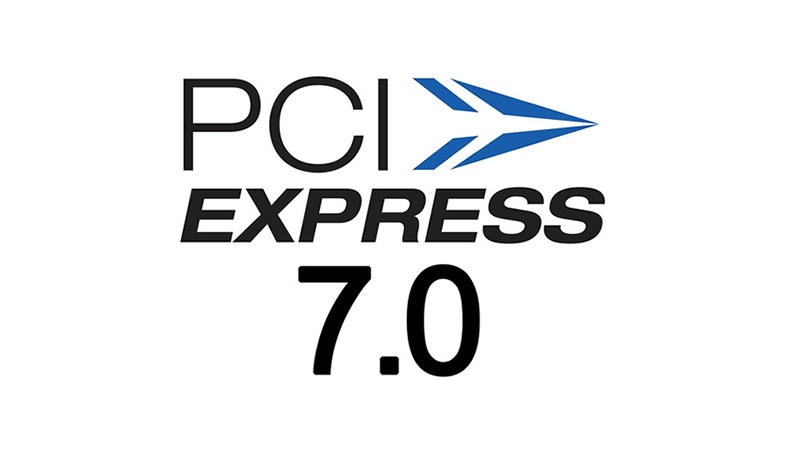This year the PCIe 7.0 standard will be adopted – four times faster than PCIe 5.0, but SSDs will have to wait with it


The PCI-SIG organization has published version 0.7 of the PCIe 7.0 standard – the final version will be presented before the end of the year. PCI Express 7.0 will provide four times the speed of PCI Express 5.0, which is used on today’s leading PCs.


Image source: PCI-SIG
The new version of the standard will allow the production of faster SSDs, more powerful artificial intelligence accelerators and video cards. The final PCIe 7.0 specifications are due to be published in 2025, but some things are already known:
- Data transfer speed of 128 GT/s and up to 512 GB/s in both directions with x16 configuration;
- Application of a pulse amplitude modulation circuit with four signal levels (PAM4);
- Emphasis on channel parameters and coverage area;
- Ensuring low latency and high reliability;
- Increasing energy efficiency;
- Maintaining backward compatibility with all previous PCIe variants.
PCI-SIG aims to double PCIe throughput every three years—in version seven, the organization expects to reach 512 GB/s three years ahead of schedule. Thus, the PCIe 7.0 x2 configuration will achieve the same speeds as PCIe 4.0 x16, and this allows for SSDs with sequential read speeds of more than 50 GB/s. High-speed networks will also become more common: PCI-SIG notes that the new PCIe standard will be useful for organizing AI systems, hyperscalers, quantum computing and much more.
Today, high-performance PCs make do with the PCIe 5.0 bus, but manufacturers have not yet begun to master the PCIe 6.0 standard. The question arises: why do we need PCIe 7.0? The new standard will help manufacturers avoid spending money on their own solutions if they need to increase throughput. PCIe will remain relevant in the future, provide backward compatibility and prevent fragmentation of the PC and computing market. Devices with PCIe 7.0 support will probably appear on the market in 2027–2028. Next in line will be the PCIe 8.0 standard, which in the x16 configuration will provide speeds of up to 1 TB/s.
Recent Posts
World’s Richest Lose $208 Billion in One Day Due to New US Tariffs
What kind of shocks the new US tariff policy will cause to the global economy…
Cyclotech flies agile flying car with rotor ‘barrels’ instead of propellers for the first time
Austrian company Cyclotech has prepared a prototype of a flying car with unusual engines for…
“I’m going to cry tears of happiness”: Apex Legends dataminers claim that Titanfall 3 is alive and will be released in 2026
Fans of Respawn Entertainment's sci-fi shooters Titanfall have already come to terms with the fact…
AI becomes first university student – Vienna University of Applied Arts enrolls Flynn system
An Austrian university has become the first in the world to officially accept an artificial…
SpaceX to Launch Starship for the First Time on Used Super Heavy Booster
On April 3, 2025, SpaceX conducted a static fire test of the Super Heavy booster,…
Windows 11 Will Soon Get a Redesigned Start Menu That Can Be Customized
According to online sources, Microsoft is working on a major update to the Windows 11…